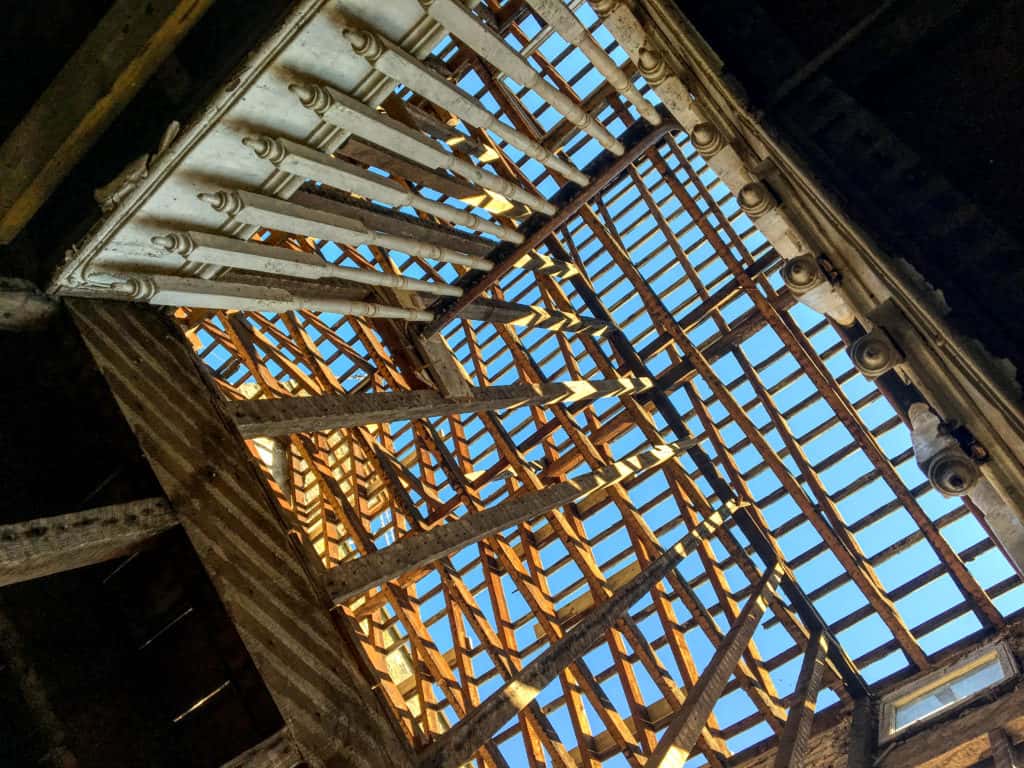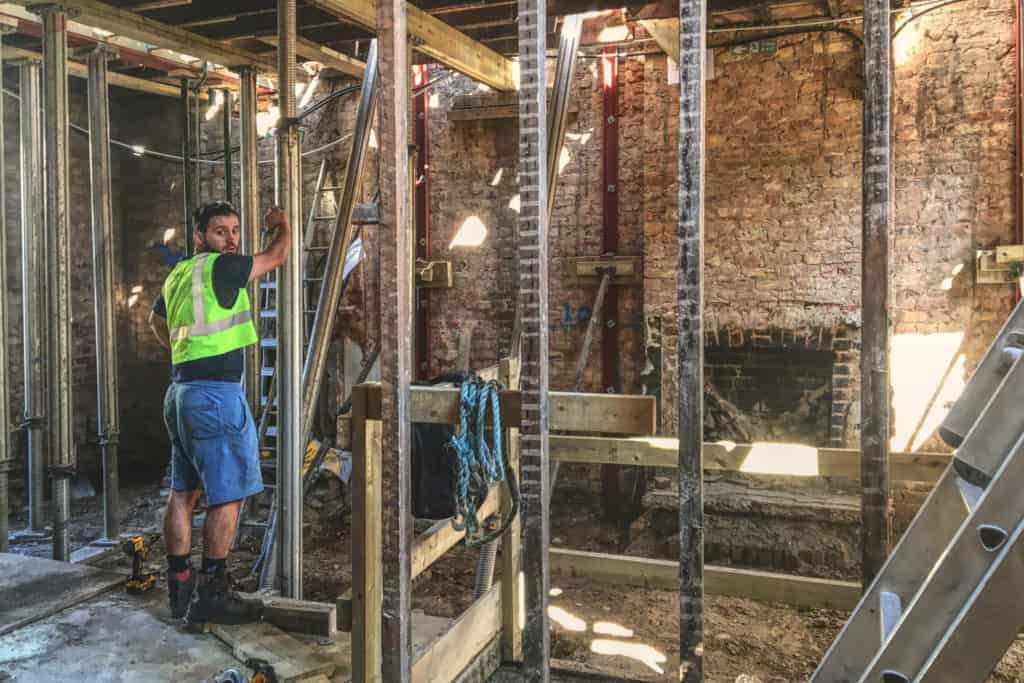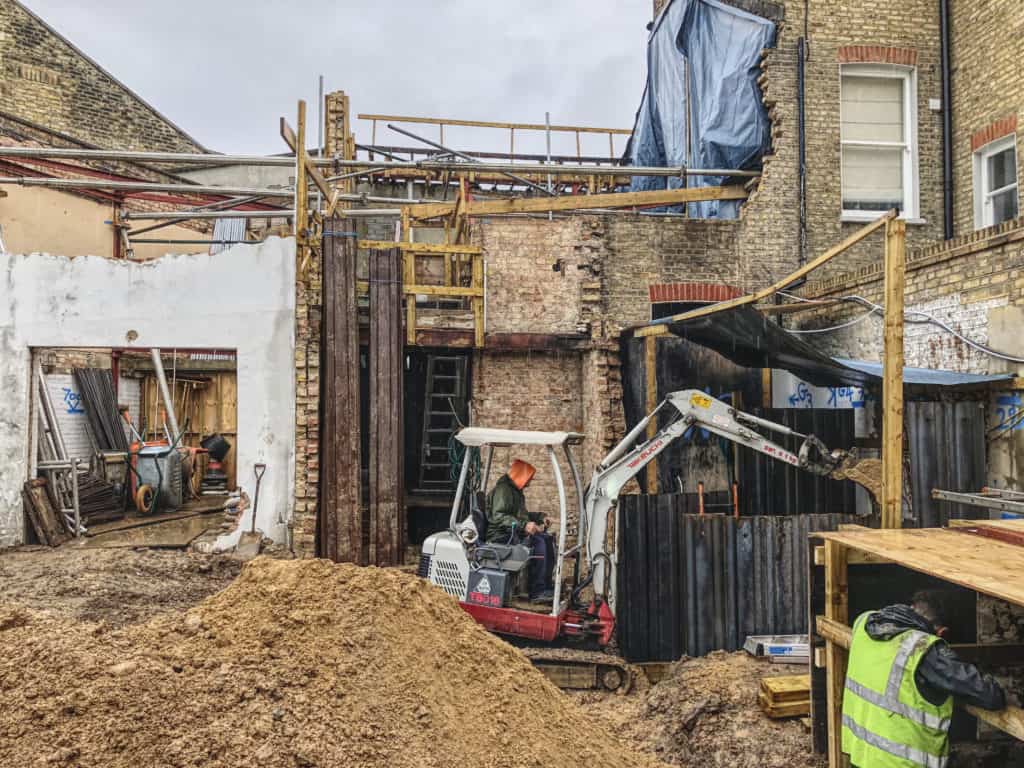BLOG
INTERESTING STUFF
THAT CAUGHT OUR EYE
Under Construction: DGA Rescues Dangerously Deteriorated Fulham House
Our ongoing Fulham full plan basement and renovation is a prime example of why we urge clients to add at least a 10% contingency fund to their projects.
We always prefer retaining as much of the original fabric as we can when renovating a property, but as we peeled back the plaster of this neglected Victorian home it became clear most of the original structure would have to be replaced.

Above is a view up into the roof with the tiles removed. We knew the roof would have to be replaced, but we soon discovered that all the timbers would need to be replaced as well, as they are too narrow for modern building regulations.

The wall in this photo was severely deteriorated, with mortar crumbling from between the bricks. To keep the whole thing from collapsing, we’ve supported it with temporary steel supports (the red beams fixed to the wall).
We’re demolishing and replacing many other walls in the house, but this one is the party wall with the neighbouring property, so we have no choice it to save it. Along with steel supports, we’ve fortified the chimney breast by filling the entire thing with concrete.

These tessellated Victorian floor tiles are unfortunately beyond saving, but we’ve agreed with our clients to reinstate similar, authentically Victorian floor tiles as part of their interior design.

This more recent photo taken on an appallingly rainy day shows just how little of the original structure has survived, as well as how much steel and timber we have to use to keep what has remained standing.
The most important feature we’re retaining is the entire front façade, which was a condition of our planning permission. It’s rare to obtain permission for a full plan basement in a conservation area, so we’re making sure to fulfil our side of the promise.
In the middle of the photo, a digger begins excavation beneath the house, which will eventually spread beneath the entire structure and beneath the garden.

Finally, here’s a look down into the beginning of our underpinning works. Concrete will fill the rear and base of this void to form an L shaped concrete slab. When dry, the hole will be backfilled with earth to support the excavation of the next underpin beside it.
Often, excavation works result in surprises. We hit an obstacle when we were digging, which turned out to be an enormous, circular concrete slab. Our structural engineer had a look and identified it as mid 20th century, likely the base of an anti-aircraft gun which protected the Thames during World War 2. I’m just thankful we didn’t uncover a bomb!
Philip Jones-Lloyd
